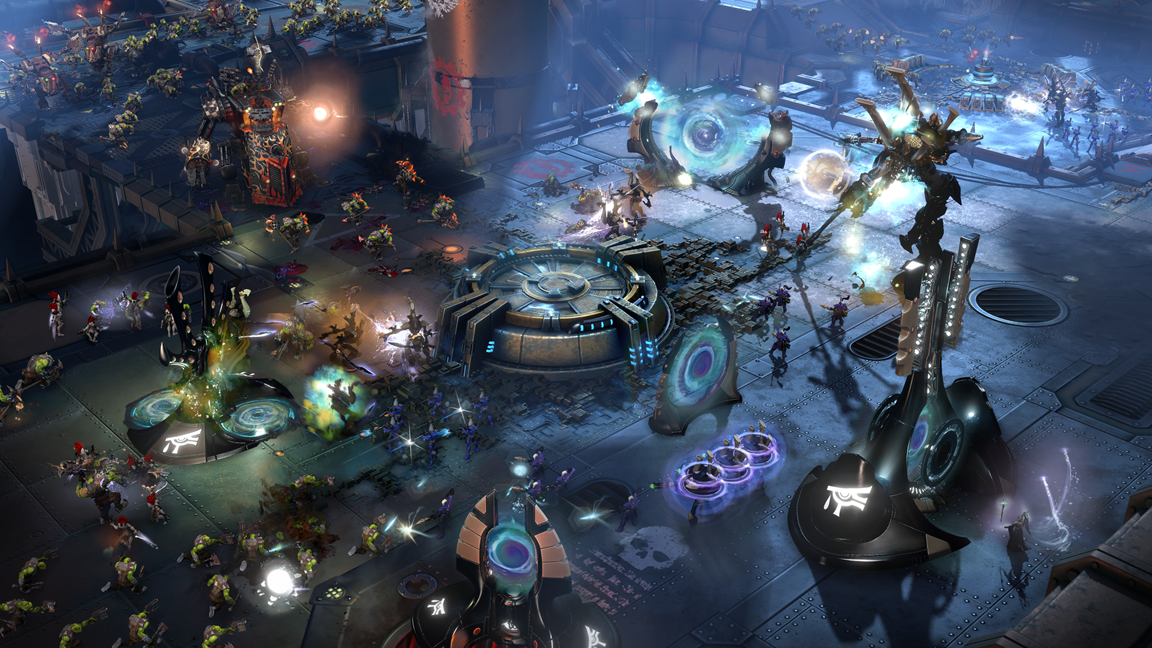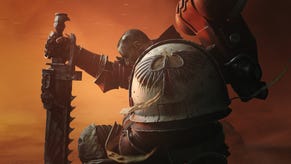Dawn of War 3 guide: tips for best units, elites, factions and more

Dawn of War 3: best units, elites, factions, abilities
Real-time strategy titles are not typically easy to adapt to, especially for newcomers to the genre. Dawn of War III, proves this point with aplomb; its implementation of certain MOBA ideals and its focus on delivering factions that are incredible in their diversity of available actions, making it sometimes more daunting than even its genre peers.
It’s okay to not fully understand all Dawn of War III’s systems when you first start playing. You will not be alone. If everybody else is telling you that they’re winning every game and flying through every skirmish with ease then you can rest assured that a huge percentage of those individuals are lying to you.
Here we’ve assembled some crucial tips for newcomers that will help ease you into the bloodletting, from covering how to approach your first multiplayer match to how to breakdown map control and units.

There’s no shame in starting out on ‘easy’ difficulty
Dawn of War III is not an easy game. Even on the easiest difficulty settings the campaign can still present a problem for players without significant experience with real-time strategy titles.
Therefore, if you’re serious about understanding the core mechanics and best tactical approaches, dropping down a difficultly level can be an excellent move. If you’re struggling so badly that you’re being destroyed without knowing why then you’re not only ridding yourself of entertainment you’re also not learning anything.
Reduce the difficulty to slow the pace down and give yourself a chance to understand what’s happening and start coming up with ways to change your results. Once you’re winning constantly on easy then start ramping up and challenging yourself more severely.

Treat single player as an extended tutorial for multiplayer
Whilst single player has a certain degree of charm as an entity in and off itself, it’s bigger and most productive use is as a basic training ground for multiplayer matches.
As such, it pays to replay missions in which key ideas and tactics are taught – especially if you feel you’ve fluked and guessed your way through objectives rather than taken full control over them. Your basic rule after each campaign mission should be to ask yourself: Can I repeat the new elements introduced without any extra help?
If you can answer ‘yes’ at the end of every mission then you’re going to have a huge advantage when it comes to multiplayer, not least because the campaign puts you in the shoes of each of the three playable multiplayer factions. Even if you plan on only playing as the Orks it pays to have a first-hand understanding of your enemy.

Pick a faction and stick with it
Given the potential for complexity offered by Dawn of War III’s mix of basic units, Elite units, stat-boosting doctrines and faction-specific powers, the best way to chalk up victories early is to learn a single faction inside and out.
Once you’ve finished single player then hop into multiplayer as whichever faction you most enjoyed playing as during the campaign and use them until you can consider yourself sufficient in their traits. It might seem dull, but the way a faction’s available skills and abilities work across different map designs can be startlingly different from the next and the only way to understand what’s even possible in such a regard is to focus all your efforts in one place.

Start with the Space Marines in multiplayer
If you have absolutely no interest in the single player campaign and don’t want to ‘waste’ time using it as your extended multiplayer tutorial then you’re best option is to jump online using the Space Marines.
Whilst they are more complicated than they initially seem, they are the simplest faction to understand given that their special ‘Drop Pod’ ability is easy to use compared to the equivalent powers enjoyed by the Orks and Eldar. The pods essentially allow you to reinforce your army whilst attacking far from your base, with shuttles of marines falling from the sky wherever you dictate.
Space Marines also feature the most resilient basic units and good movement speed, meaning they can withstand the occasional ill-advised command from you as you get your bearings.

Forget about trying to control the entire map in multiplayer
Dawn of War III’s map structure usually centres around the provision of a number of lanes flanked by control points that provide you with resources should you capture them. Trying to spread your units out across all of these control points is the best way to force yourself too thin. Do that and you’ll soon find yourself unprepared to deal with a targeted attack against you.
Resultantly, the best tactic is not to try and capture everything but to simply capture more than your enemy can. In this way you can consistently outperform them in resource gathering and, if you’re smart about your building and unit training choices, stay ahead of them when it comes to overall army strength.
If you’re familiar with MOBAs of the likes of League of Legends or DOTA 2 then this will seem like par for the course, but allowing your enemy free reign over large patches of territory isn’t necessarily an intuitive tactic to embrace.

Don’t restrict yourself to the ‘best’ Elites
The most powerful Elites are, unsurprisingly, also those that take most amount of time to bring into battle. Whilst its always nice to have the biggest and the best in reserve at all times, to overly rely on them is a good way to learn Dawn of War III in the only most one-dimensional of ways.
Cheaper, smaller Elites are not often going to win you the battle by themselves, but they are strong enough to help you control the battlefield during early phases of battle and sow seeds of doubt into your foe’s mind. Bringing only the cheaper Elites into a match and having them all on the ground all together as quickly as possible can be a better tactic than waiting for a faction’s best to become available.
Whilst much of Dawn of War III’s appeal comes from the fact that it’s possible to overcome early deficits, it’s still advisable to take control of skirmishes as early as possible. Cheaper Elite units help you do exactly that.

Most importantly: Do. Not. Give. Up.
One of the very best elements of Dawn of War III is the way in which it’s possible to change the course of battle in your own favour even when it looks as though all is lost. In large part, this is thanks to the availability of Elite units.
This is a particular satisfying reality in multiplayer matches in which your opponent is already celebrating their victory simply because they’ve enjoyed a good start. As you pull out the big guns down the line and start taking control you almost feel your foe’s ego abandon them.
The key is make sure your base is protected at all times, even if it means regularly retreating in order to stay alive and kicking. So long as you can continue to draw breath then you’re in with a chance if you can hold out long enough to bring in your more powerful Elites.
Elites aren’t necessarily the tools you will eventually use to defeat your opponent, but their presence on the battlefield is typically enough to draw an enemy’s attention. Whilst this is happening the door is open for you to capture control points, gain resources and turn the battle around. Do not give up just because you’re losing early in a match.







